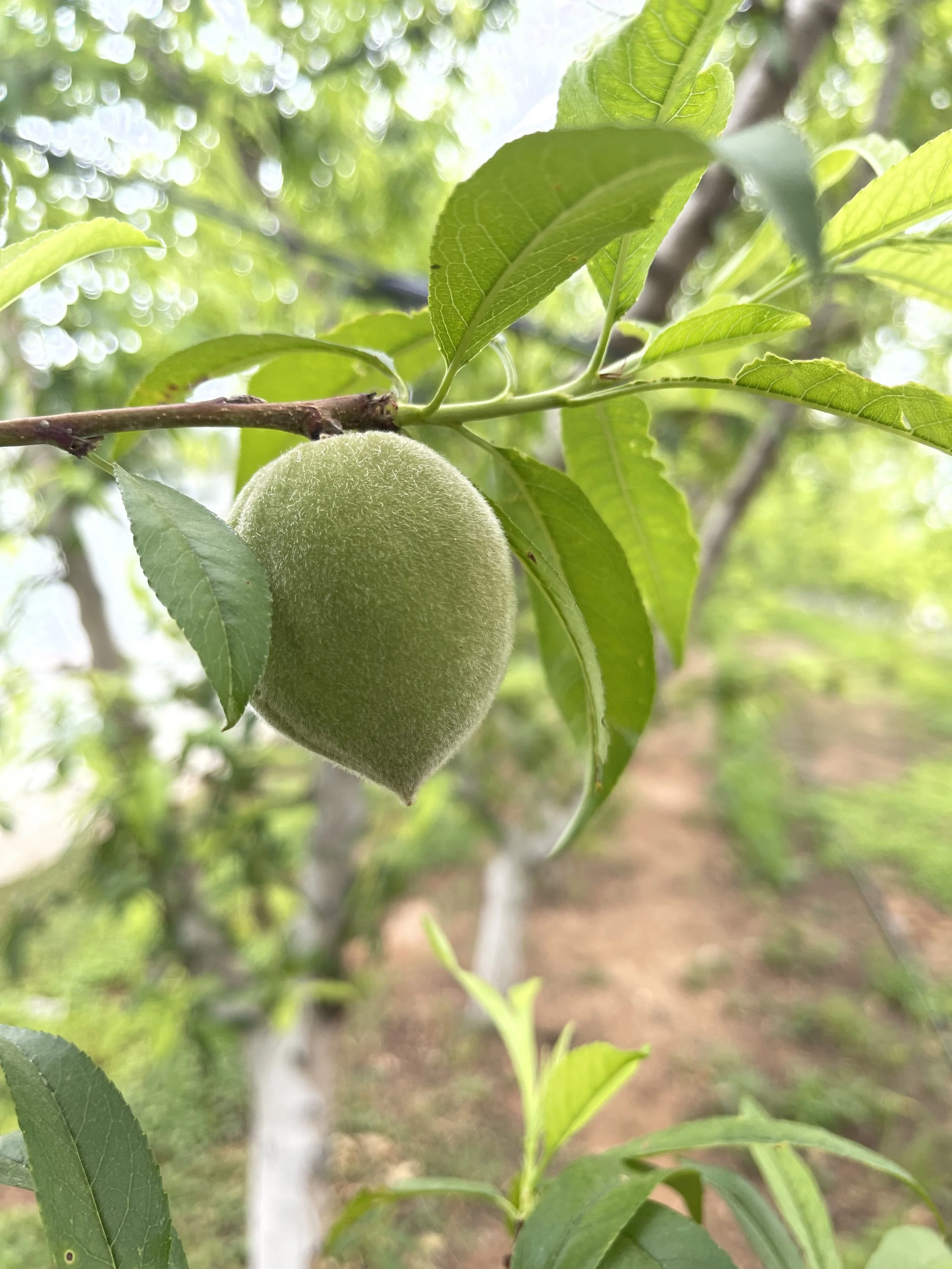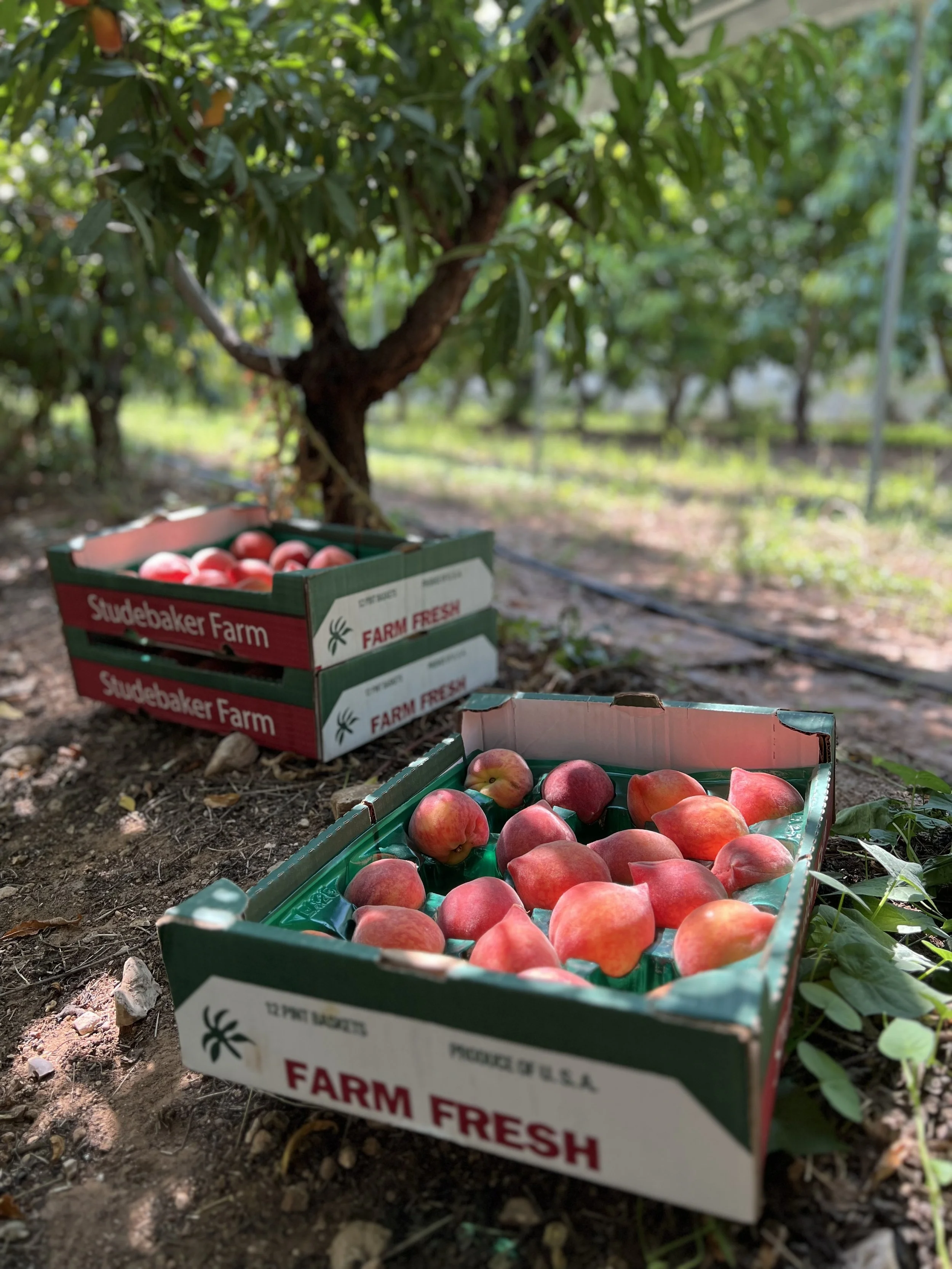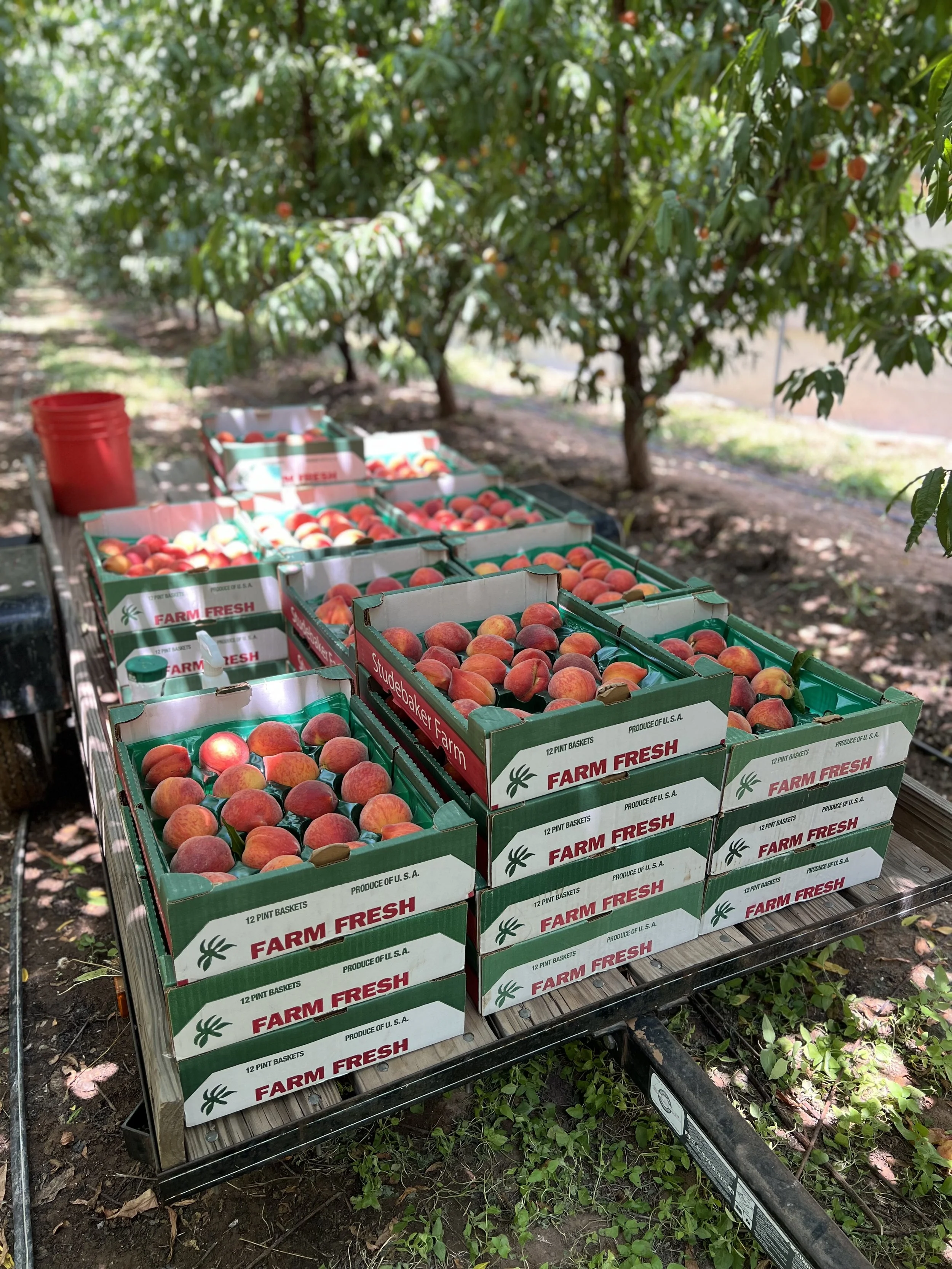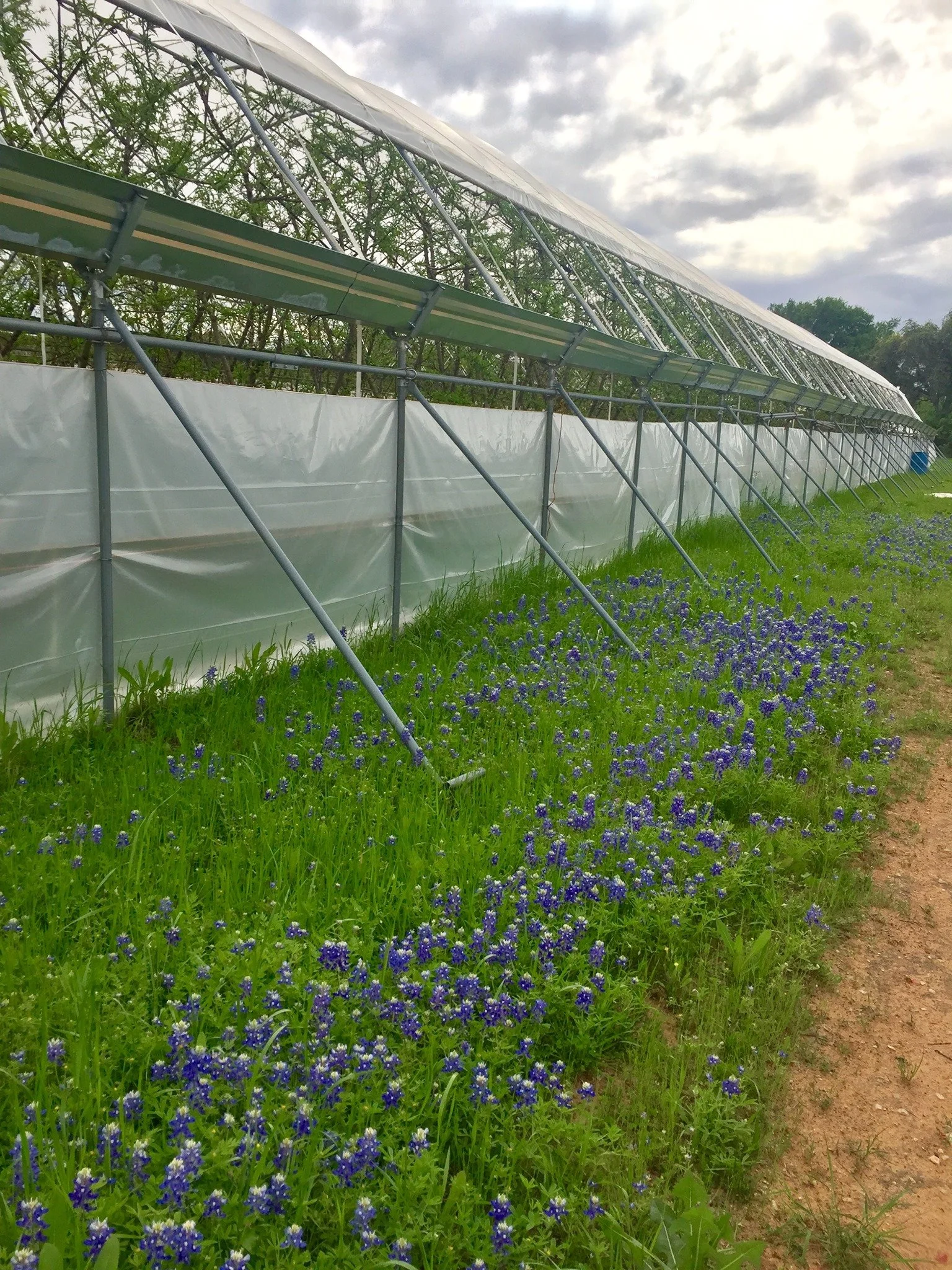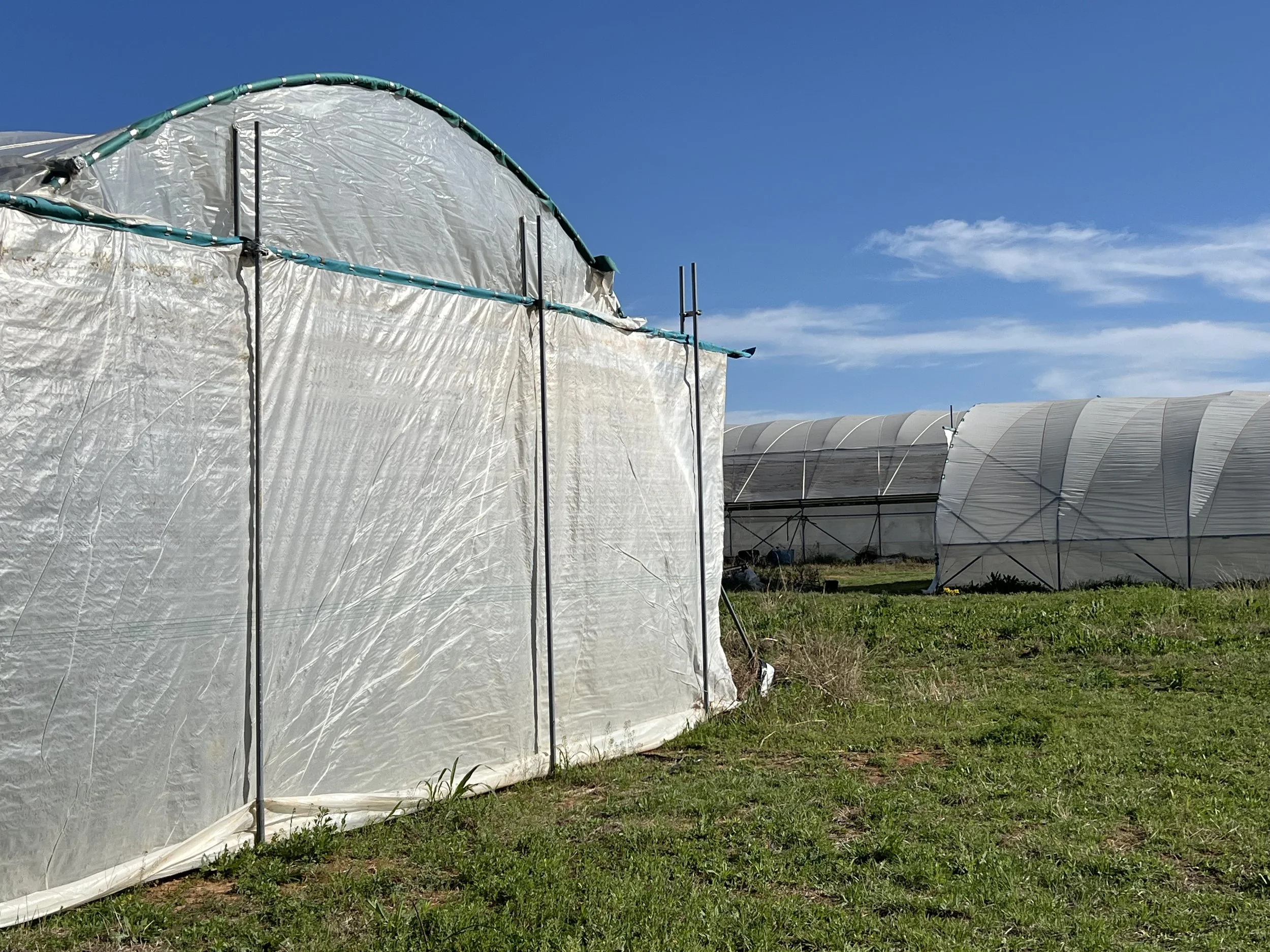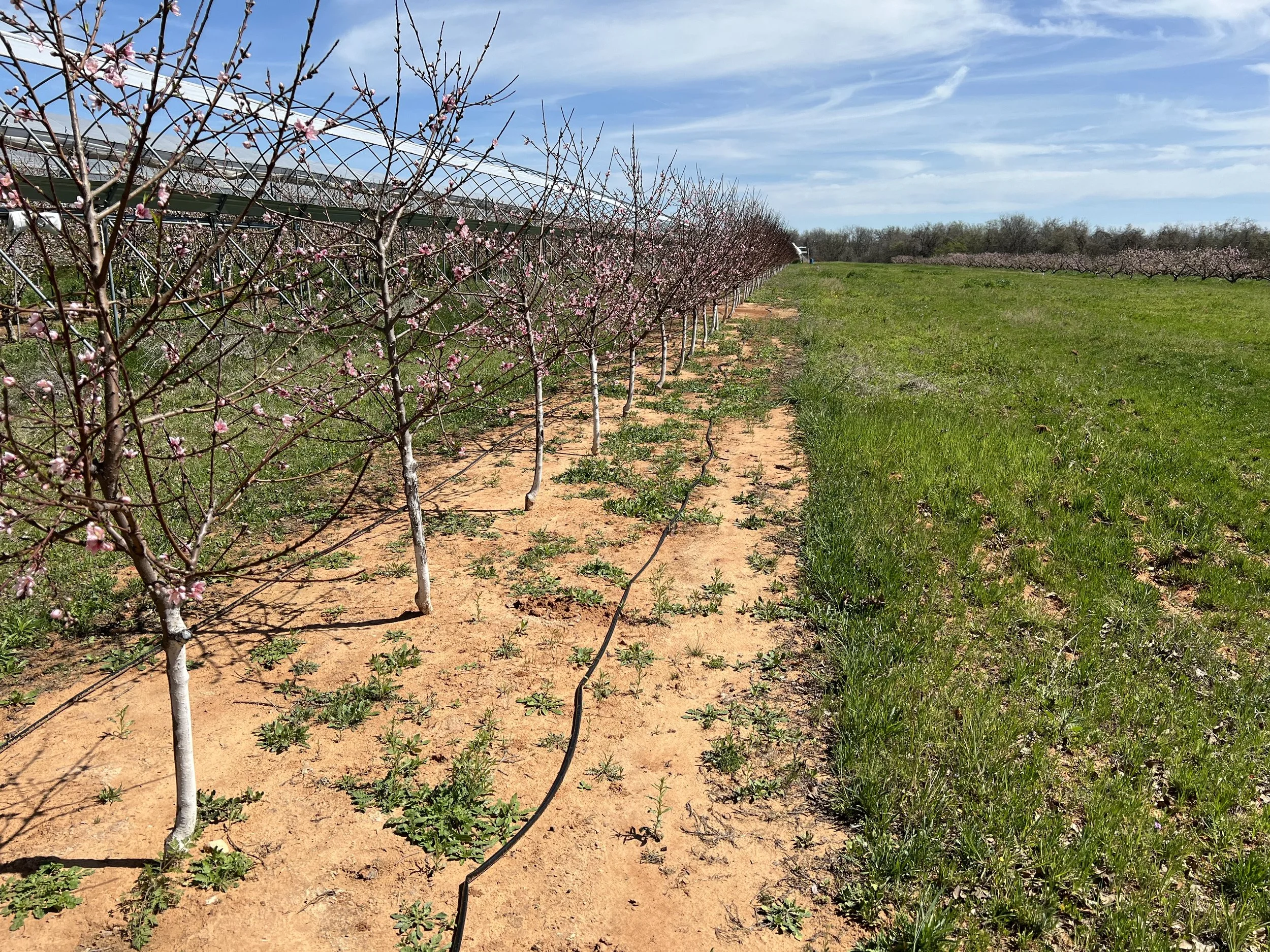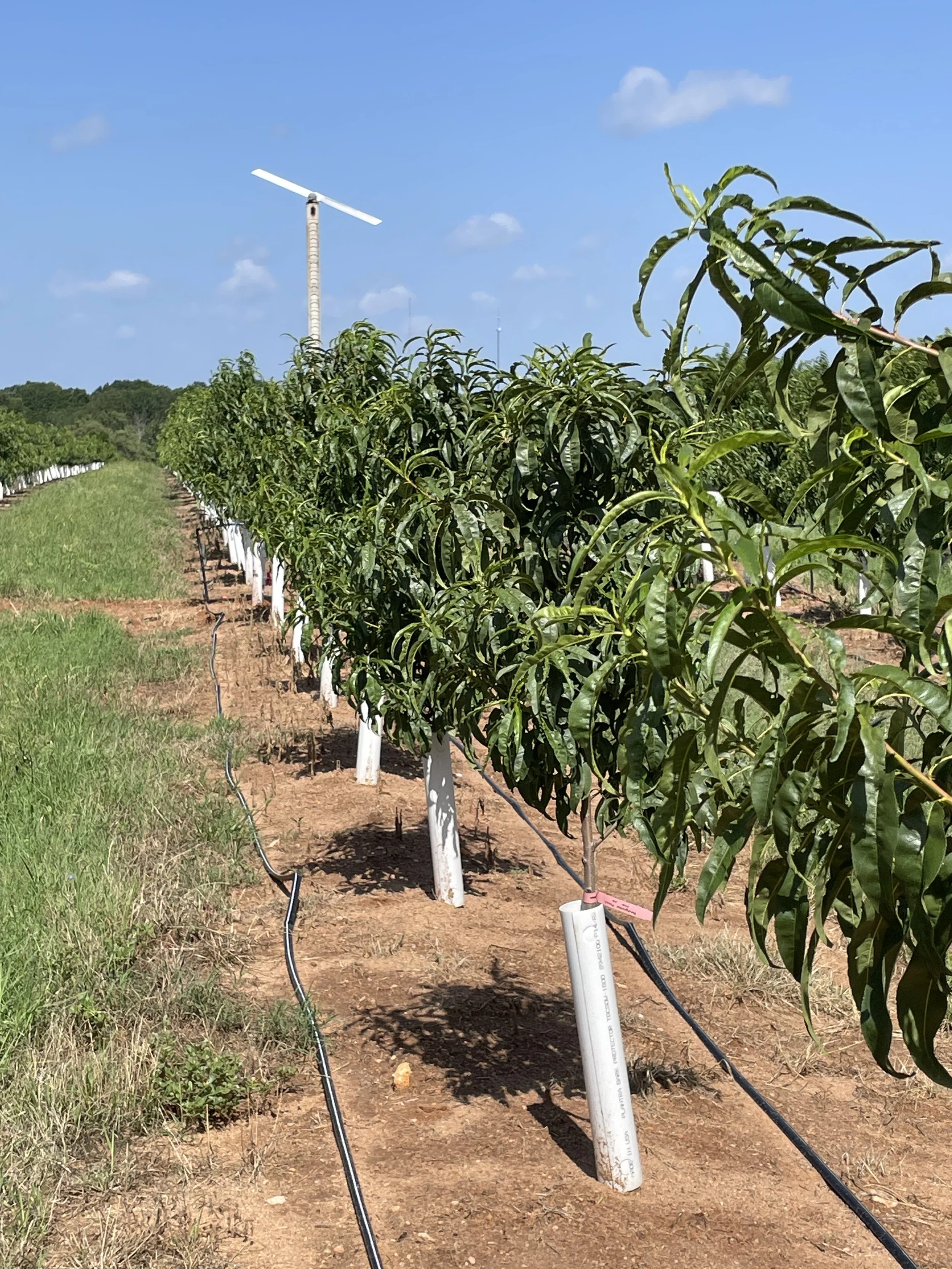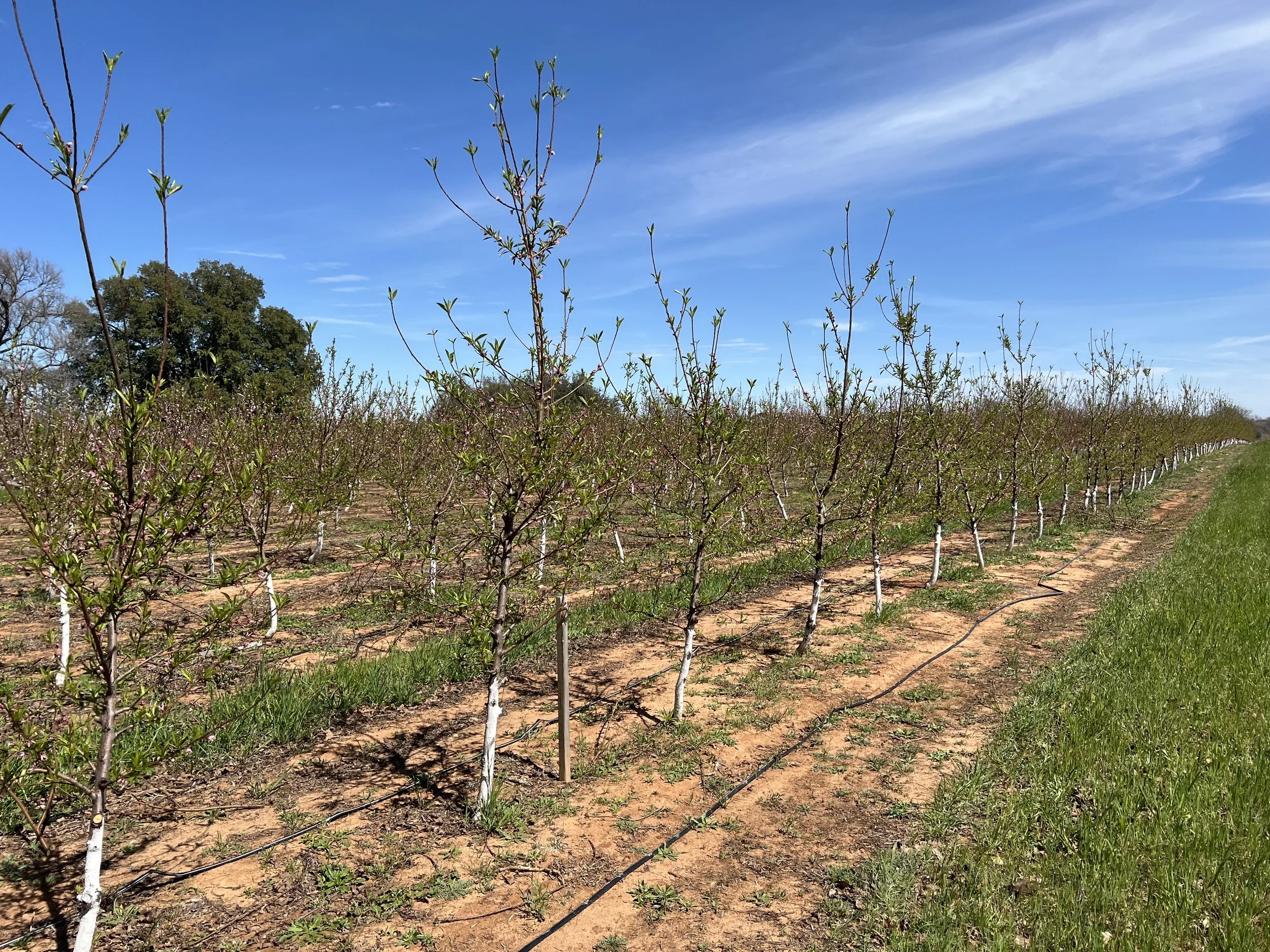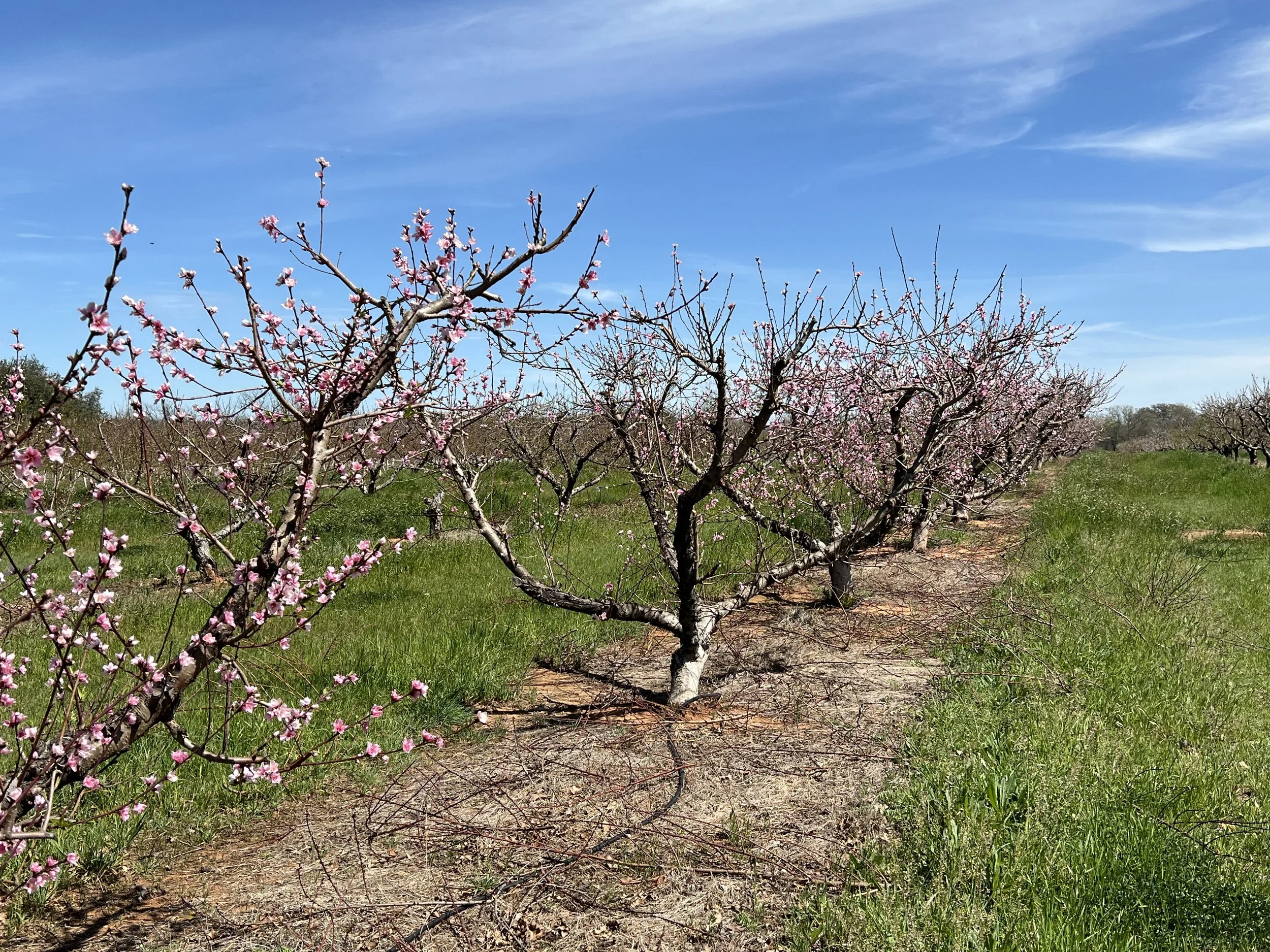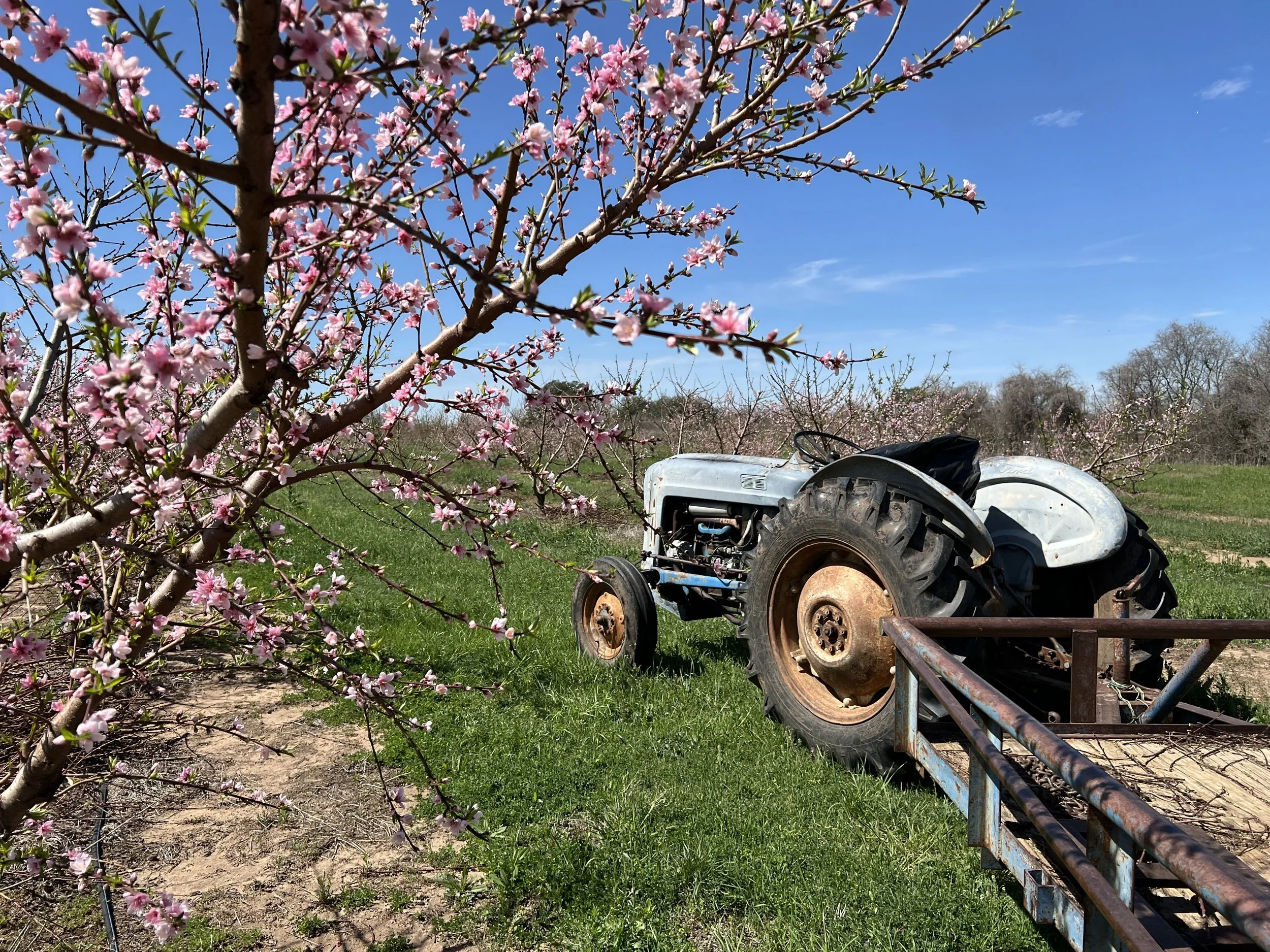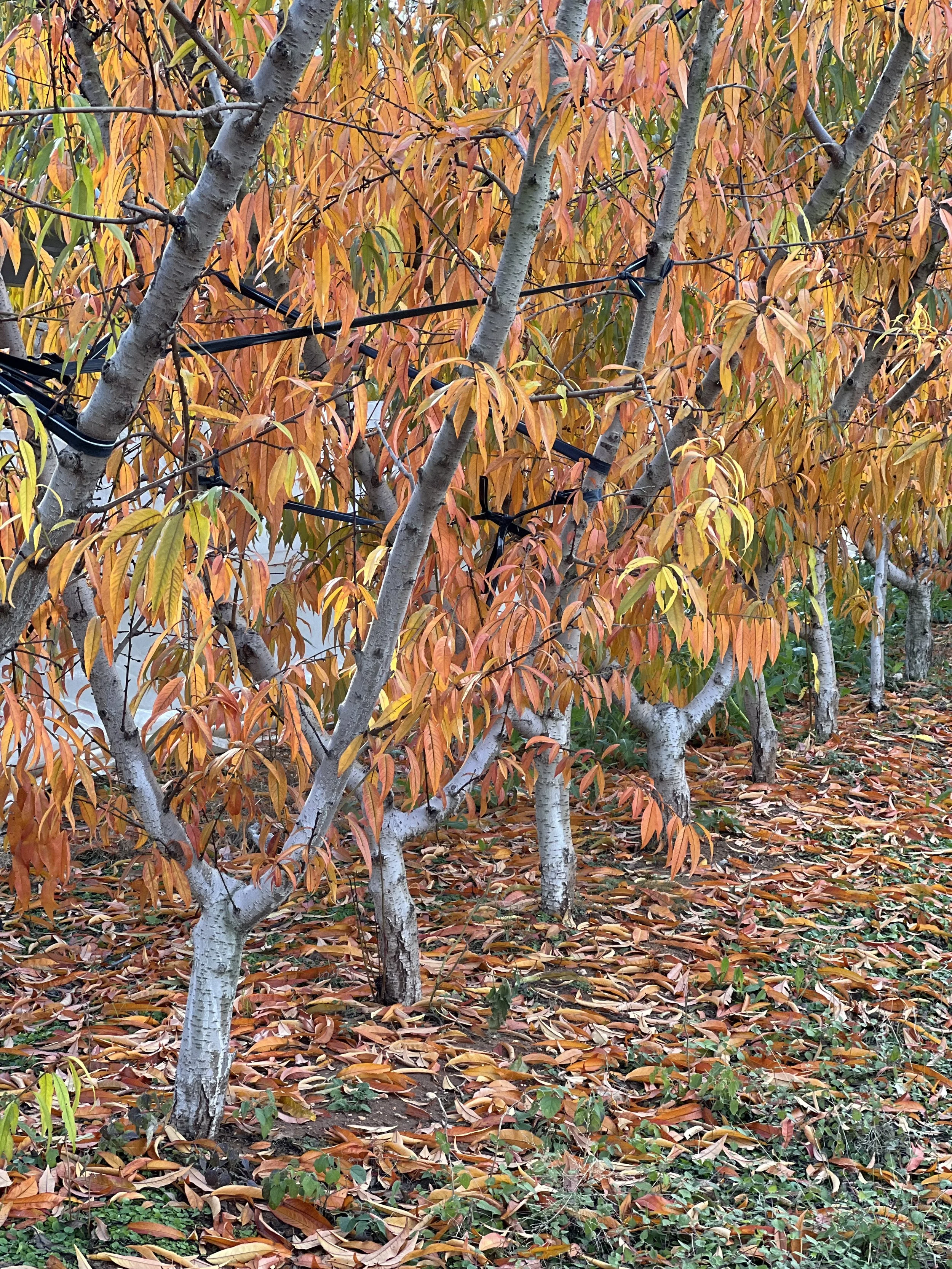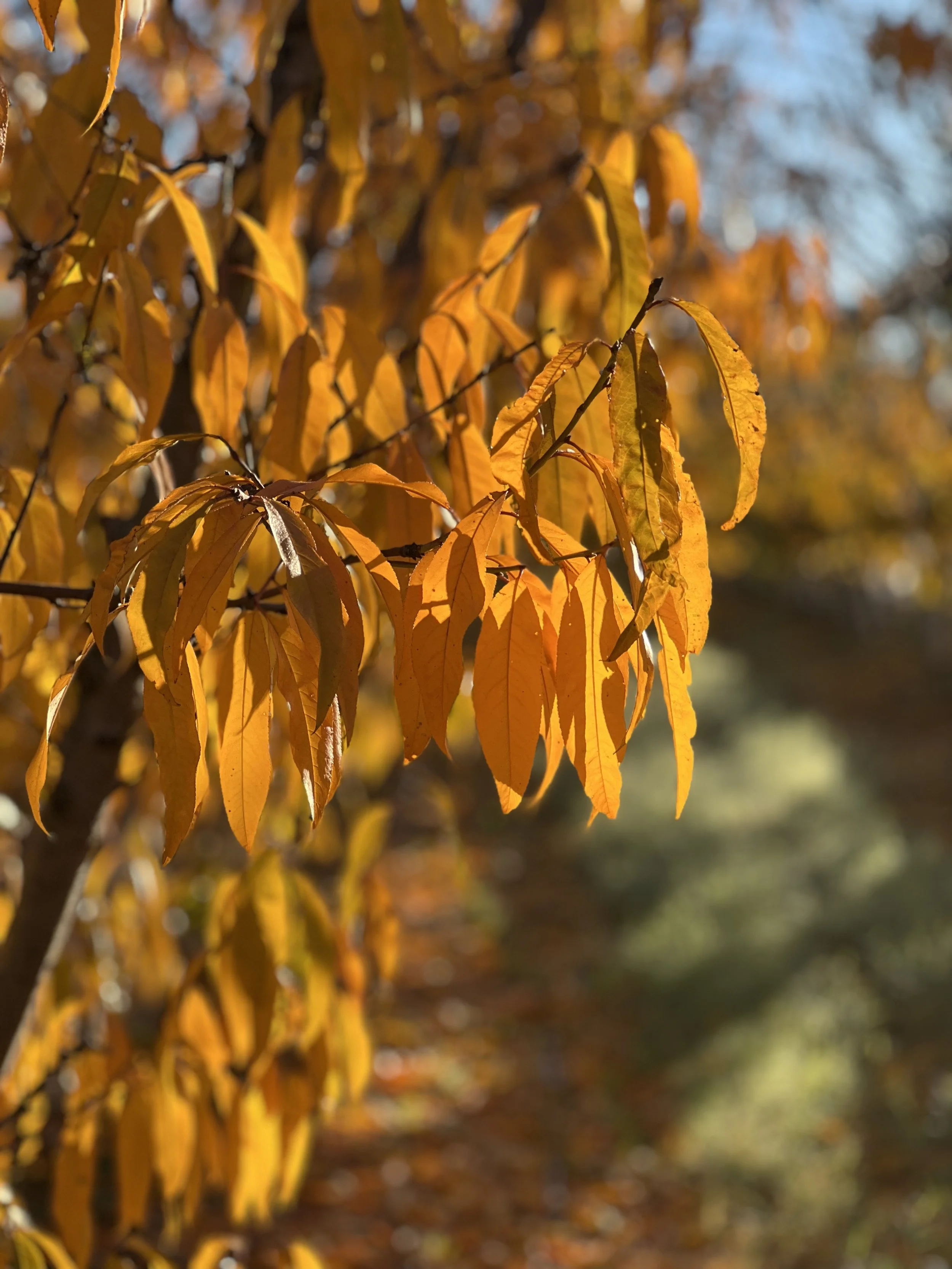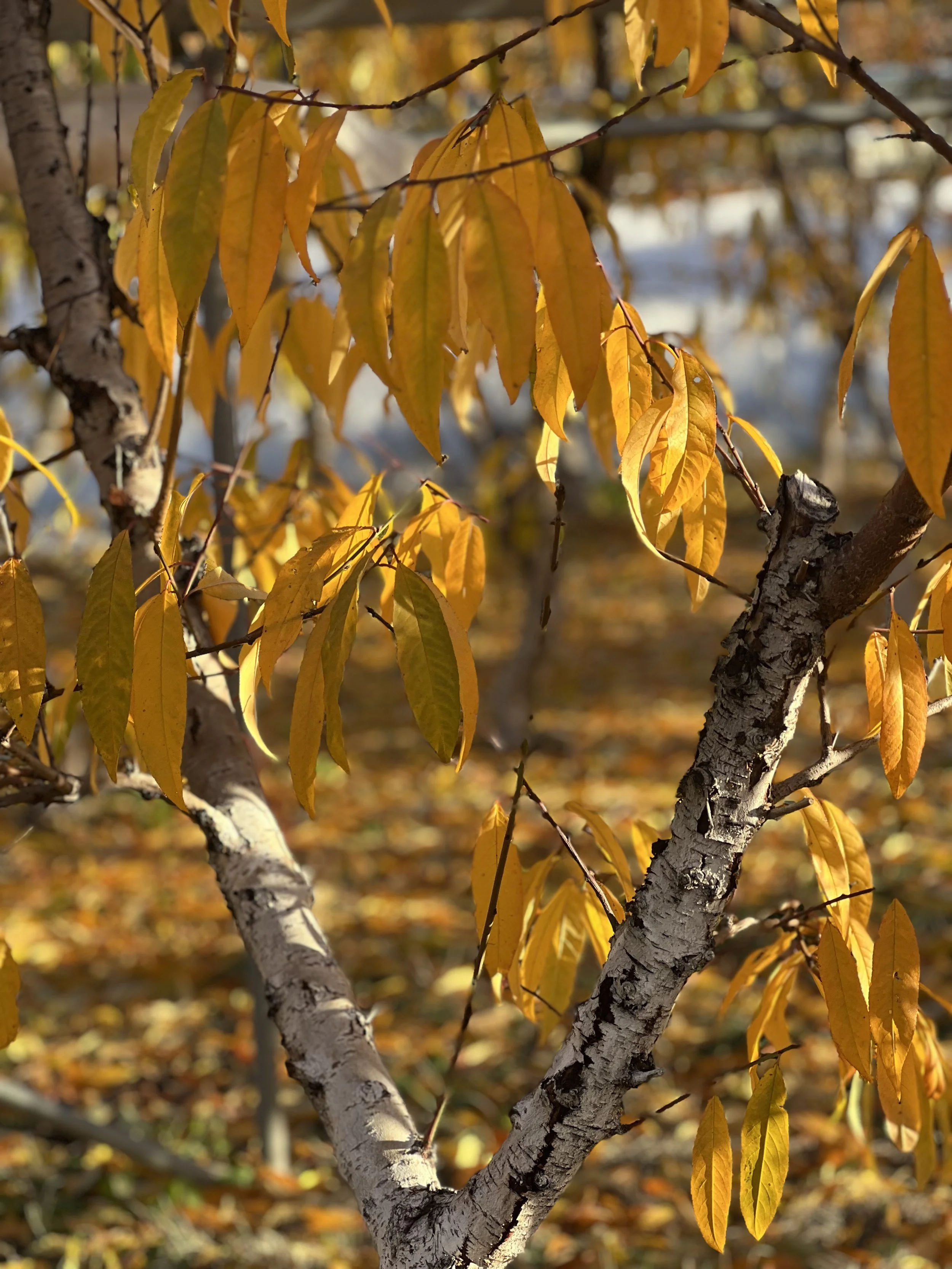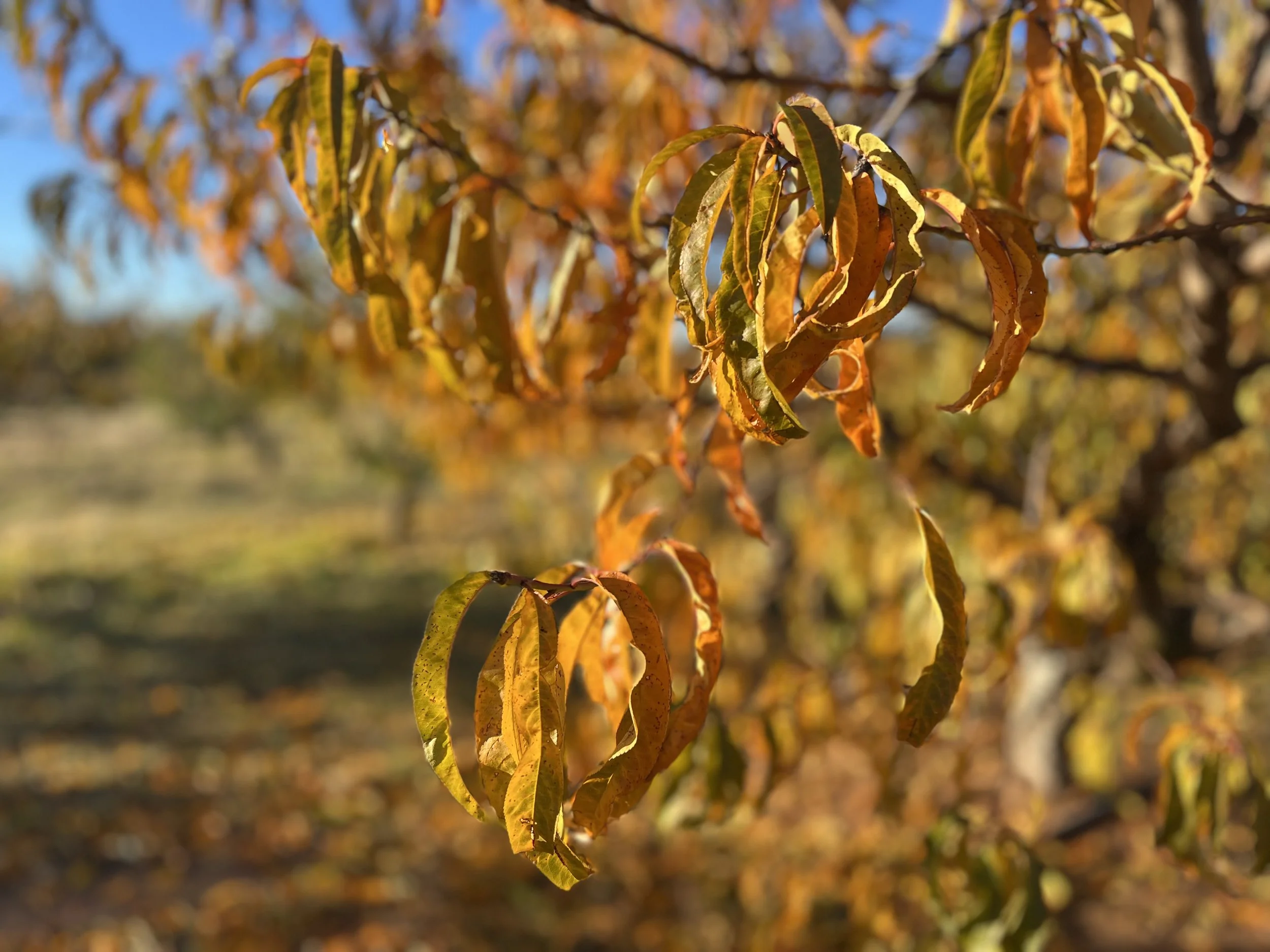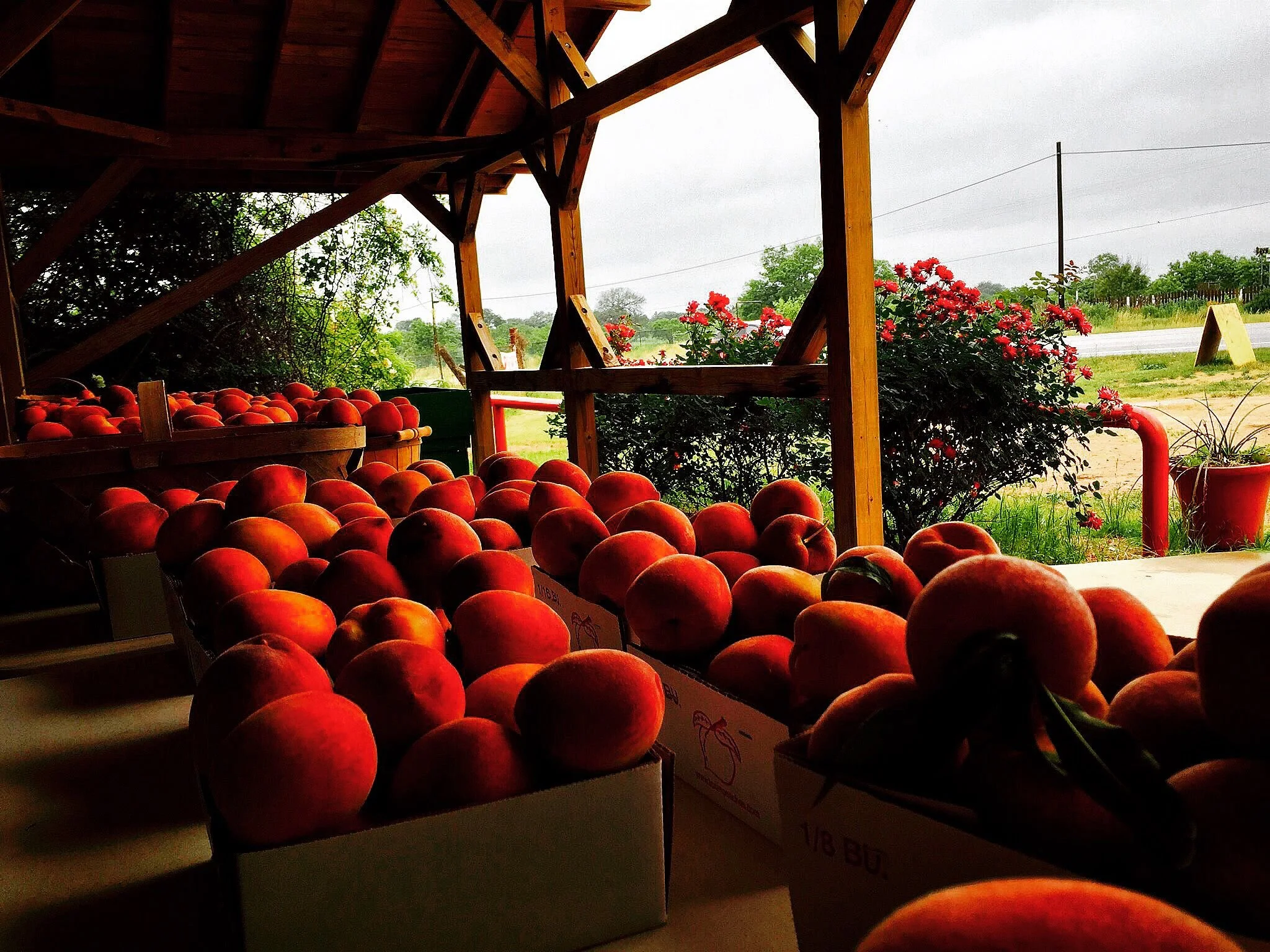
Exhibits of the Farm
The Orchard through the Seasons
Welcome to our visual journey through Studebaker Farm. These images capture the intricate and beautiful process of peach production, from the delicate spring blooms to the vibrant summer harvest. Each photograph tells a story of careful cultivation, hard work, and the natural rhythms of our orchard. You'll see the transformation of our trees through critical stages - the hopeful white and pink blossoms of early spring, the meticulous thinning process, and the rich, colorful harvest that represents months of dedicated farming. These pictures offer a glimpse into the life of our family farm, showcasing the passion and precision that goes into every peach we grow.
Peach Blossoms
The peach bloom is a critical and delicate period in our orchard, typically occurring during March. This stage is heavily influenced by accumulated chill hours and rising temperatures, marking one of the most precarious times of the agricultural year. During bloom, our peach trees burst into beautiful white and pink blossoms, signaling the potential for the season's fruit. However, this period is fraught with risk, as unexpected frost events can devastate the delicate blooms and significantly impact our crop. The bloom can vary in its progression - sometimes happening simultaneously across the orchard, and other times staggered - with different peach varieties showing unique blooming patterns and timing.
Thinning
After bloom, small peaches begin to appear in a stage called "shucksplit," where the tiny fruit emerges from the bloom. This is the most vulnerable stage for the peaches, with any temperatures below freezing potentially destroying the crop. In the weeks following shucksplit as the peaches become bigger, our farm undertakes the critical and time-sensitive process of thinning. This process is essential because leaving too many peaches on a tree leads to multiple problems: smaller fruit, longer harvesting times, and potential limb breakage from too much fruit load. Thinning must occur before the peach's internal pit hardens, as any thinning after this point will have minimal impact on fruit size. These careful weeks of thinning are crucial to ensuring a high-quality, properly sized peach harvest for the summer.
Harvest
Every peach in our orchard is picked by hand, with the majority being placed into individual spots in flats (also known as panta paks). This method not only prevents bruising, but allows for preliminary sizing and keeps any accidental “bad peaches” from coming in contact with the other fruit. Most picking occurs during the cooler morning hours, as rising temperatures can cause peaches to bruise easily. Each flat is kept in the shade, typically under the cover of our picking trailers, until it can be transported to the stand or our coolers. We pick our peaches at near-ripe to ripe stages, guaranteeing that every peach sold will deliver maximum flavor. This meticulous approach reflects our commitment to providing the highest quality fruit.
The Art of Picking
Selecting the perfect peach is far more nuanced than simply judging by color. Peaches exposed to more direct sunlight will have a darker hue compared to those growing in the shaded interior of the tree. Furthermore, different varieties can ripen to dramatically different colors - from deep red to golden yellow (eg. Blaze Prince versus Quachita Gold). When picking, look for peaches that are swollen and often have a subtle blush. (You will notice that some of the peaches in the pictures will need to wait until the next pickings, while others are ready to go). It is important to pluck each peach with “the palm”, avoiding fingerprints that could damage the delicate fruit.
High Tunnels
In addition to our conventional orchard, we use high tunnels for some of our peach trees. These are specialized growing structures that allow us to cover our crops during critical spring frost events, protecting delicate peach blooms from potential damage. While other regions might use high tunnels for extended growing seasons or consistent rain protection, our primary goal in Texas is frost prevention. Once temperatures begin to rise and heat up, we remove the covers to preserve the flavor of our peaches and maintain the overall health of the trees. The high tunnels represent our commitment to innovative farming techniques that help us produce the highest quality fruit possible, giving our peaches the best chance to develop and thrive in our challenging Texas climate.
Rootstock
Each peach tree in our orchard begins its life grafted onto a rootstock at the nursery. Rootstock selection (different from variety selection) can depend on multiple factors, including soil drainage, soil composition, and desired tree vigor. We've been experimenting with an innovative rootstock called "MP 29", which is one of the first semi-dwarf rootstocks developed for peaches. (You can see these newer trees in the block along Highway 290 coming from Fredericksburg). This unique rootstock offers remarkable advantages: the trees naturally grow upwards in a straight, vertical line, unlike traditional peach trees. This characteristic has allowed us to implement higher-density plantings and adopt a central-leader pruning system, in contrast to the conventional open-shape pruning seen in our older orchard sections.
The Importance of Pruning
Pruning is a critical practice in peach orchard management, significantly influencing tree health, fruit quality, and overall productivity. The process involves two main cycles: winter pruning and summer pruning, each serving distinct purposes that contribute to the long-term success of the orchard. Winter pruning, typically initiated in January, is the heavier of the two cycles and focuses primarily on the training and shaping of the tree to ensure well-balanced spacing among the limbs, with any necessary "big cuts" made at this time. In contrast, summer pruning is lighter and focuses on maintaining light penetration within the tree canopy while keeping the tree clean. Good pruning design not only enhances the tree's stability but also optimizes space, light penetration, and harvest efficiency.
Fruit Quality: Adequate sunlight exposure is crucial for the development of high-quality fruit. Well-lit (but not overexposed) fruit tends to be larger, sweeter, and more flavorful, directly impacting marketability.
Preventing Shade Death: By allowing light to reach all parts of the tree, pruning helps prevent shade death on limbs. Limbs that do not receive sufficient light can weaken and die, reducing the overall yield of the tree. Summer pruning involves selectively removing excess foliage, particularly vertical shoots in the interior, to enhance light exposure. Again, this cannot be overdone, as too much pruning at this time can shock the tree. Keeping the tree clean is also essential for preventing disease and promoting airflow.
Selecting for Budwood Growth: Each season, the tree will produce new budwood growth that will yield fruit in the following season. Thus, a healthy stand of budwood is vital for next year's harvest. Well-spaced winter pruning encourages the growth of new budwood, while summer pruning must leave plenty of this new, growing budwood. This ensures a robust supply of new buds for the following season’s fruit production, supporting the overall health and yield of the tree.
Facilitating Efficient Picking: The shape and height of the tree are designed to encourage efficient fruit picking. By ensuring that most of the fruit load is easy to see and reach, pruning helps streamline the harvesting process. Additionally, limbs should not extend too far into the row to allow for the movement of trucks and tractors.
Choosing the Main Limbs: It is particularly critical to choose the main limbs for the tree’s shape when the tree is young. The limbs selected depend on the pruning system being employed. Proper selection and training during this early stage lay the foundation for a well-structured tree that can support healthy growth and fruiting in the years to come. If done correctly from the beginning, later pruning cycles will focus more on maintaining the tree's shape.
Different pruning systems are employed based on the orchard's environment and the planting density of the trees being cultivated:
Conventional Orchards: In our outside orchards, planted at a normal tree density, we favor an "X-Shape Pruning System" for its efficiency in light distribution and structural integrity. Four evenly spaced main limbs are chosen to form an X-shape when viewed from above, typically growing at a 45-degree angle from the ground. For orchards with wider spacing, additional limbs can be allowed as long as even spacing is maintained.
High Tunnels: Both “V-Pruning” and “Trellised-Pruning” systems are utilized in these controlled environments. These trees are planted at high density, aiming for maximum leads, which requires extensive training early on. While this may sacrifice some picking efficiency, we allow these trees to grow taller, necessitating some ladder picking. In the “V-Pruning” system, the limbs grow in a V-shape (or Y if including the trunk). We often provide support to the main limbs, especially when young, using rope ties to the high tunnel structure to prevent limb breakage from fruit load. The trellised system features a built-in "fence" for growth support, spreading the limbs in a lattice-like style along the wires, creating a hedge-like appearance down the row.
Semi-Dwarf Trees: For our newer semi-dwarf plantings, we have adopted a central-leader pruning system, with small subsidiary limbs distributed upwards along a strong central stem. These trees are also planted at high density spacings but do not require support due to their natural shape and smaller height. Similar to the trellised system, this creates a natural hedge-like row, but with each tree having its own space instead of overlapping limbs.
In summary, pruning is an indispensable aspect of peach orchard management that directly affects tree health, fruit quality, and yield. By strategically implementing winter and summer pruning cycles, we can ensure that their trees receive adequate light, maintain a healthy structure, and produce high-quality fruit year after year. Proper limb selection during the early stages of growth is particularly vital, as it sets the foundation for a productive and well-formed tree. Additionally, designing the tree shape to facilitate efficient picking enhances the overall productivity of the orchard.
Falltime in the Orchard
Fall marks a (relatively) slower time of year on the farm, but it's not without its own quiet beauty. As the peach trees prepare for winter dormancy, their leaves can transform into a palette of vibrant yellows and oranges, giving us our own version of Texas fall colors. While the bustling activity of spring and summer harvest has passed, this season offers a peaceful transition into the next year. That isn't to say there isn't still plenty of work to get done. Occasionally, we will still open the stand with new-crop pecans, along with any remaining salsa and jam from the season.
Why the White Bark?
You may notice some of our peach trees have white-painted trunks, particularly on the south-facing side. This practice helps protect the trees from sun scald, a condition where extreme temperature fluctuations can cause tree bark to crack. During winter, when nights are very cold and days become relatively warm and sunny, the white paint reflects sunlight and prevents the bark from heating up too quickly. By keeping the tree trunk cooler, we help protect the tree's bark and overall health. This simple yet effective technique is part of our careful orchard management, ensuring the long-term vitality of our peach trees.
Winter Chill Hours
During the winter months, our peach trees undergo a critical dormancy process that is essential for their spring rejuvenation. Chill hours are similar to a good night's rest for the trees, representing hours of cold weather between 32-45°F. However, this is not an exact science. Immediate hot weather can negate earlier chill hours, while cloudy, rainy days above 45°F can still contribute to the necessary winter chill. Trees that do not receive adequate chill hours can produce weaker, less dense blooms and ultimately fruit that is softer, pointier, and more susceptible to damage. In our region, growers typically plant varieties requiring 650-850 chill hours. A cold winter is crucial for ensuring the health and quality of our peach crop, making each chilly day an important part of our orchard's annual cycle.








